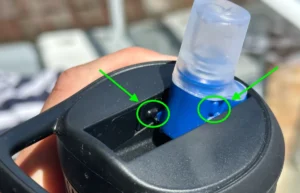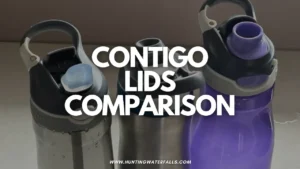I’m well aware that cleaning my water bottles thoroughly and regularly is super important to keeping them hygienic and making my drinks taste great.
But that hasn’t always stopped me from procrastinating and creating some real biohazard-level abominations in my Hydro Flask or other water bottles.
Also I once put in some strange herbal tea when I was sick and couldn't get the taste out for a while.
But the good news is, it’s actually pretty easy to remove weird tastes from a metal water bottle.
The easiest way to get weird tastes out of stainless steel and other metal water bottles is to fill the bottle with boiling water and let it soak while thoroughly cleaning the lid with vinegar and baking soda.
In most cases, this will remove stubborn drink residue, residual soap, or mold and mildew that were causing the bad taste.
There are also a few more obscure techniques you can try if the basic ones don't work.
Once you’ve gotten rid of the taste, it’s time to talk about prevention.
By simply washing your bottle every couple of days, you shouldn’t have to worry about many weird tastes moving forward.
If you’re a bit on the lazy side, picking up some water bottle cleaning tablets can make routine cleanings completely painless. It's honestly been a game changer for me and well worth the cost.
Just make sure you’re still scrubbing the bottle out with hot water, dish soap, and a bottle brush at least once every week or two.
How To Remove Weird Tastes From A Stainless Steel Bottle
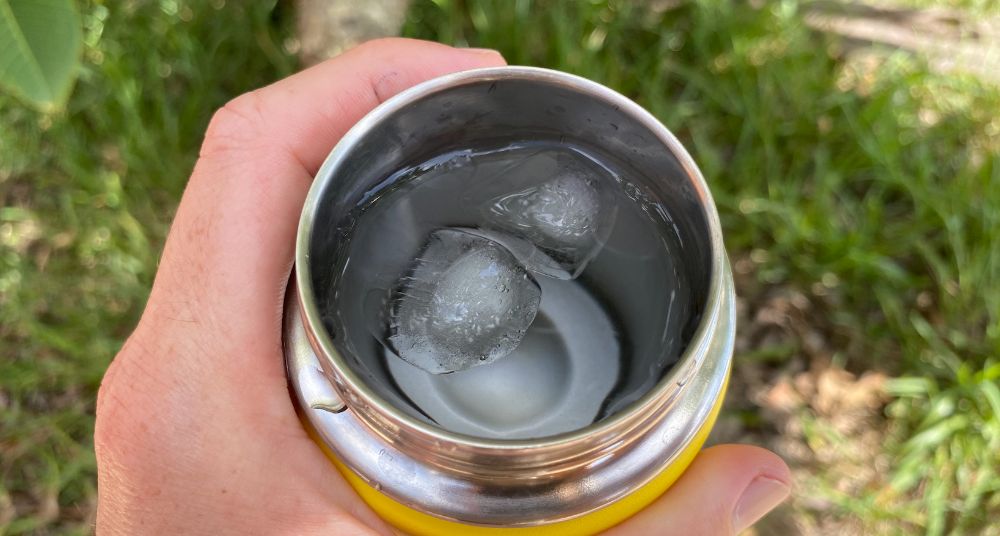
A vast majority of weird tastes in stainless steel bottles are caused by either stubborn drink residue, residual soap from not rinsing properly after cleaning, or mold and mildew growing somewhere inside.
Unlike with plastic bottles, you don’t have to worry as much about stainless steel actually absorbing flavors and smells or developing a weird plastic-y taste as your bottle ages — making removing weird tastes from metal bottles much easier than removing them from plastic.
1. Soak Your Bottle With Boiling Water
For the most part, soaking your bottle with boiling water and thoroughly cleaning the lid will fix weird tastes in a metal bottle nearly every time.
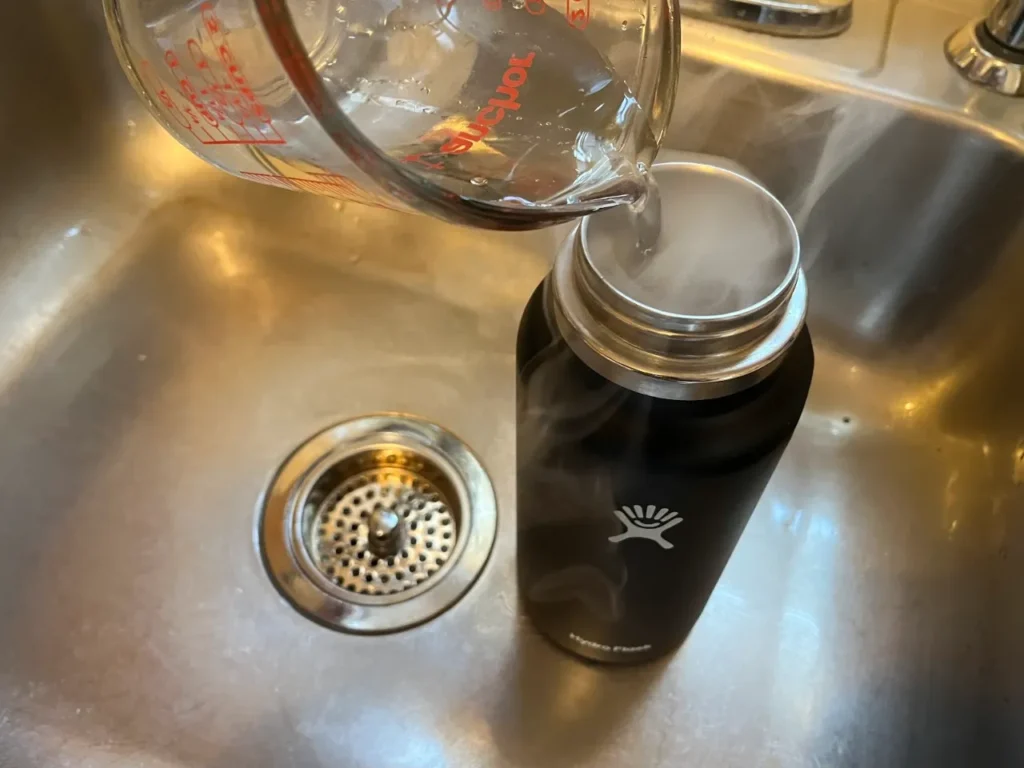
To clean the bottle itself, we’ll simply fill it with boiling water and let it soak for a few minutes, repeating as necessary.
This works great to loosen any stuck-on residue and kill any mold or mildew lurking inside.
- Bring a pot of water to a boil. Boiling the water directly in your bottle is likely to compromise its vacuum-insulated seal or damage its paint — though it’s fine to do so in non-insulated unpainted bottles, like stainless steel Nalgenes.
- Fill your bottle to the brim with the boiling water.
- Let it soak for five to ten minutes.
- Dump it out and wash as normal with hot water, dish soap, and a bottle brush.
- If any of the strange taste remains, you may need to repeat steps 1 through 4.
That should take care of the bottle itself, but oftentimes the lid of your bottle is actually to blame — and because most lids are made of plastic, boiling water isn’t your best bet.
2. Deep Clean Your Bottle With Vinegar and Baking Soda
Instead, we’ll deep clean the lid (and even the bottle itself) with vinegar and baking soda, which are both potent natural antifungal cleaners that can kill mold, remove absorbed flavors, and strip away stubborn residue.
It's also an extremely cheap solution. I was able to deep clean multiple water bottles all for less than $2.
Depending on the lid of your bottle, this could be a quick and easy ten minute process or an hour long nightmare (looking at you Contigo).
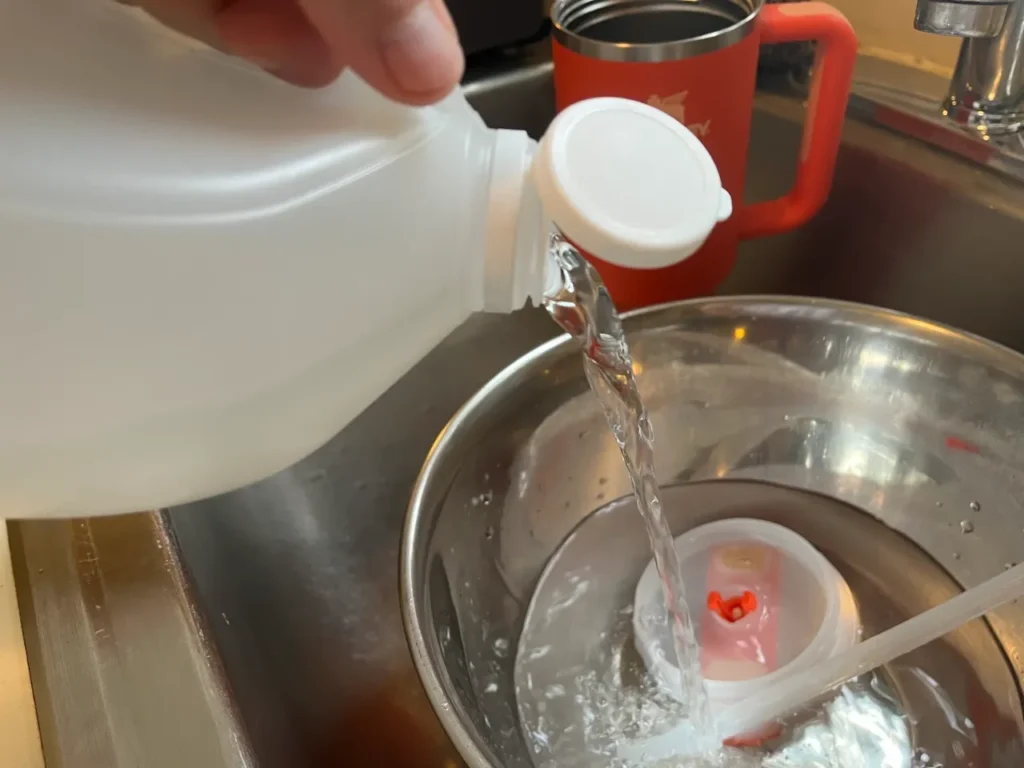
- Remove your bottle’s lid and disassemble it as much as is reasonable — by removing straws, gaskets, and opening any flaps or flip-out straws. Some lids are really complex and not that easy to pull apart. Just try do your best.
- Soak all parts of your lid, fully submerged in a 50/50 mixture of hot water and distilled white vinegar for about half an hour. If your bottle’s particularly nasty, you can use undiluted vinegar instead. You may need to stick a bowl or plate on top of your lid if it wants to float to the top.
- While your lid soaks, make a paste out of baking soda and water, aiming for a toothpaste-like consistency.
- Remove the lid from the vinegar and, using a small bottle brush or toothbrush, scrub your baking soda mixture across every surface, paying particular attention to any cracks or crevices. If you notice bubbling or fizzing, that’s just the natural reaction of baking soda and vinegar and will actually help with the cleaning process.
- Let the baking soda mixture rest on your lid for about 15 minutes.
- Rinse away the baking soda and clean your lid as normal with hot water, dish soap, and a small cleaning brush.
- Let your lid fully dry before reassembling.
If your bottle still has a weird taste, try to determine if it’s the lid or the bottle itself causing the issue.
If it seems to be the bottle, try soaking it overnight with a 50/50 mix of hot water and distilled white vinegar. If it’s the lid, you may just need to buy a replacement — since plastic can be much harder to remove bad tastes from.
3. Use Lemon Juice To Remove Weird Flavors
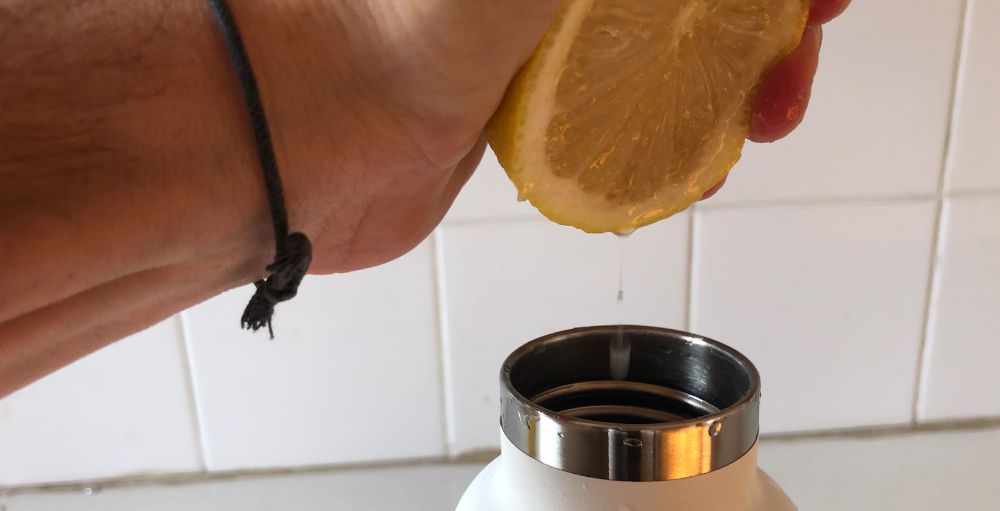
If the vinegar and baking soda doesn't do the trick then the next step I turn to is lemon juice.
Lemon juice can be really good as removing hard flavors and I've used it to remove flavors in my CamelBak bladder as well as removing flavors from my plastic water bottles.
However, the potential downside of using it in metal water bottles is that it can lead a metallic taste in the bottle. Which is why I always try the vinegar and baking soda option first.
Try soaking your metal water bottle with some fresh-squeezed lemon juice to see if it remove the taste:
- Fill your bottle with ¼ cup of fresh-squeezed lemon juice, topping off the rest of the way with hot water.
- Let soak for at least half an hour, though longer is better.
- Give your bottle a thorough cleaning with soap and water.
- Air dry upside down on a drying rack fully before testing your bottle.
4. Use Ice and Salt To Scrub The Inside

Sometimes when cleaning the inside of your metal water bottle a bottle brush doesn't remove the residue from the walls of the bottle and this can continue to make your bottle taste weird.
One great tip for fixing cloudy water bottles also helps to clean the inside of metal water bottles and remove the bad tastes.
Fill your bottle about half way with ice cubes and add a good amount of rock salt. Now shake your bottle vigorously for approximately 5 minutes.

The ice and salt will be abrasive on sides of your bottle and help to scrub away any biofilm or flavor residue that's stuck there.
You can then rinse your bottle in warm water and then use it straight away.
5. Scrub The Inside With Steel Wool
I usually try to avoid steel wool on my metal water bottles as it does scratch the metal and can also potentially leave a metallic taste in your water bottle.
But if you've tried everything else then I recommend scrubbing the inside of your water bottle with steel wool to scrape off any residue that could be causing the bad flavors.
How To Get That Weird Metallic Taste Out Of Your Water Bottle
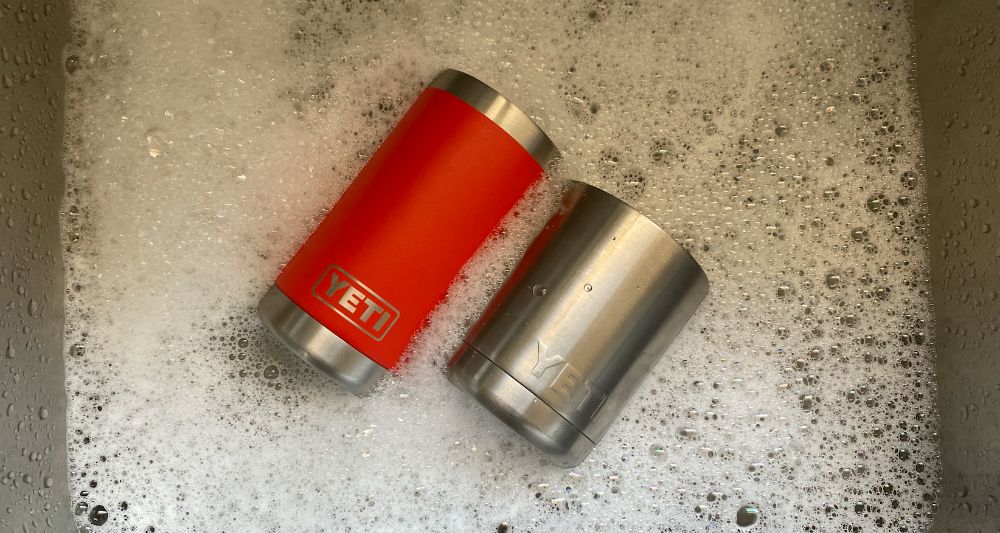
If your metal bottle has a weird metallic taste, there are a few possible causes, each with their own solution:
- If your bottle is brand new, it may just have some residue that made its way inside during manufacturing. A simple cleaning should handle it with no problem.
- If your bottle has a coating or lining on its interior, it may be contributing to that strange metallic taste in your drink. If so, the methods in my guide on removing bad tastes from plastic bottles should work pretty effectively.
- Older and cheaper bottles that are frequently exposed to acidic drinks may actually begin to corrode over time. Take a look in your bottle for any rust spots or darkening areas. You can try to fix them using vinegar and baking soda paste and a rough bottle brush, but it’s probably just time for a new bottle.
- Some cheap metal water bottles may actually leach iron, chromium, or nickel into your water. And unfortunately, there’s no way to fix it. You’ll simply need to buy a better quality bottle.
- And lastly, it could just be a strange reaction between your skin and the metal causing the metallic taste. If that’s the case, you may be better off trying a different brand or opting for a plastic bottle instead.



